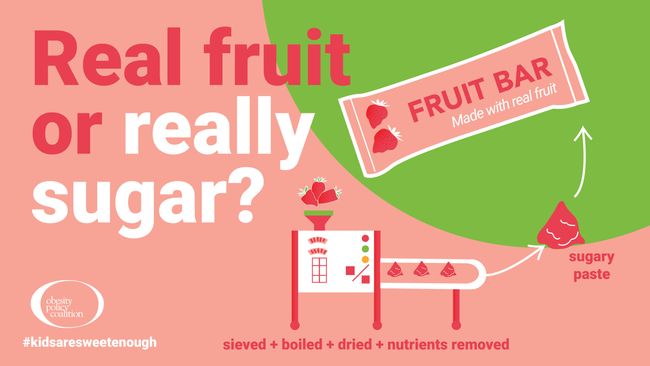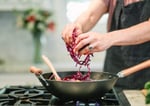Cutting through the sweet talk: hidden sugars and how to avoid them
by Stefanie Hodson, Communications Officer
- August 16, 2021
- Leave a comment
We all know that too much sugar is bad for our health. But when food brands use marketing spin and confusing product labels to mask what’s really in the product, how do we cut through the sweet talk and see how much sugar is really hiding in the food we feed our families?
Sugar – is it all bad?
When talking about sugar and health risks – not all sugars are equal. Naturally occurring sugars found in whole fruits, vegetables and dairy are fine to consume as part of a healthy diet. It’s the sugars that are added, including during processing, that we need to be concerned about.
Unfortunately, avoiding these added sugars isn’t as straightforward as it may seem. Often, packaged products like yoghurts and breakfast cereals contain both natural and added sugars, so it’s important to know what we’re looking for when we pick up these products.
What’s really in packaged foods for kids?
Hidden added sugars are not only common in everyday packaged foods, they’re also found in foods marketed specifically for children.
In fact, a recent review by CHOICE found that almost half of all toddler snack foods are high in sugar – containing at least 15% sugar, with the worst offenders containing more than 60% sugar!
In kids’ food these sugars usually appear in the form of fruit concentrates, pastes and purees – derived from fruit but processed until they are barely more than a sticky, sugary paste.

Finding healthier foods for your family
When choosing healthy foods for your family in the supermarket, think about shopping around the edges. Focus on filling your basket with whole foods – fruits, vegetables, lean meats, grain (cereal) foods, and dairy products - which are usually found around the outside of the aisles.
Remember, kids don’t need special foods. From 12 months of age it’s encouraged they eat the same healthy foods as the rest of the family.
To keep kids going between meals, fruit, cut up vegetables, plain popcorn and wholegrain crackers make great healthy snacks. LiveLighter also has a range of healthy snack recipes suitable for the whole family – try our healthy date and muesli slice or our fruity muffins for something a little sweet but still full of the nutrients your family needs.
If you buy packaged foods in the aisles, use our simple tips below to find the best options.
1. Read the nutrition information panel
To find out the amount of sugar in a food or drink, check the ‘per 100g’ column of the nutrition information panel and compare this against our guide. Try to aim for foods with less than 5g of sugar per 100g.
| Best | Okay | Too high |
|---|---|---|
| Less than 5g | 5 - 15g | More than 15g |
In Australia, natural and added sugars are listed together on the nutrition information panel, so it can be hard to see how much added sugar is in a product. Looking through the ingredients list can help.
2. Check the ingredients list
Some healthy foods contain natural sugars AND added sugars. Read the ingredients list and try to choose products with no added sugar. The ingredients are listed in order from largest to smallest by weight.
Look for hidden sugars in the ingredient list such as fruit concentrates, fruit paste, glucose, syrup and cane sugar. Although these are some of the common names, there are more than 60 different names for added sugars. Find out some of the other common names and how you can avoid them in our Tips for Reducing Sugar Intake.
To make it easier for consumers to see how much sugar is really in the products they buy, the Obesity Policy Coalition is calling for improvements to sugar labelling. For more information and to see what you can do, head to their campaign webpage.







